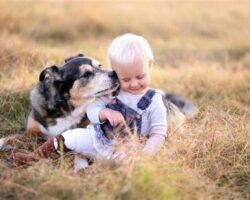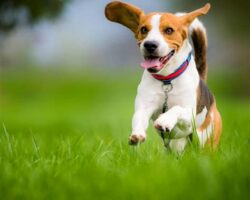Discover the best dog breeds for agility & speed. Learn training techniques & common mistakes to avoid. Prepare mentally & physically for agility competitions. Build a strong bond with your dog.
Understanding agility training for dogs
Agility training for dogs is a popular way to keep your furry friend physically and mentally stimulated. It involves teaching your dog to navigate through an obstacle course, with speed and precision. The main goal of agility training is to improve your dog’s coordination, confidence, and bond with their owner.
When starting agility training, it’s important to consider your dog’s breed, size, age, and temperament. Not all dogs are suited for agility, so it’s essential to assess whether your dog has the physical and mental capacity for this type of activity. Additionally, proper training techniques and positive reinforcement are crucial for a successful agility training experience.
Furthermore, agility training requires patience, consistency, and dedication from both the owner and the dog. It’s important to start slow and gradually progress to more challenging obstacles. Building a strong foundation and understanding your dog’s individual strengths and weaknesses will greatly contribute to a successful agility training journey.
Factors to consider when choosing a dog for agility
When it comes to choosing a dog for agility training and competitions, there are several important factors to consider. One of the most crucial factors is the breed of the dog. Some breeds are naturally more agile and energetic, making them better suited for agility training. Breeds such as Border Collies, Australian Shepherds, and Jack Russell Terriers are known for their agility and speed, while larger breeds such as Golden Retrievers and Labrador Retrievers may not be as well-suited for agility competitions.
Another factor to consider is the age of the dog. While it is possible to train dogs of any age for agility, starting at a young age can be advantageous. Younger dogs tend to be more energetic and easier to train, while older dogs may take longer to learn new skills and techniques. It’s also important to consider the health and physical condition of the dog. Agility training can be physically demanding, so it’s essential to ensure that the dog is in good health and free from any underlying medical conditions that may affect their ability to participate in agility competitions.
Finally, it’s crucial to consider the temperament and personality of the dog. Dogs that are confident, outgoing, and have a strong desire to please their owners tend to excel in agility training. Additionally, dogs that are highly motivated by food or toys can be easier to train and may perform better in competitions. It’s important to choose a dog that enjoys physical activity and has a strong bond with their owner, as this will make the training process more enjoyable for both the dog and their handler.
Top breeds known for agility and speed
When it comes to agility training and competitions, certain dog breeds stand out for their speed, athleticism, and trainability. These breeds are known for excelling in agility courses and competitions, thanks to their natural abilities and eagerness to please their owners.
One of the top breeds known for agility and speed is the Border Collie. These intelligent and energetic dogs are highly focused and excel in agility training. Their natural athleticism and agility make them a popular choice for agility competitions.
Another breed known for agility and speed is the Australian Shepherd. These versatile and active dogs thrive in agility training and competitions. Their intelligence, obedience, and boundless energy make them well-suited for the fast-paced nature of agility courses.
Training techniques for agility competitions
When it comes to agility competitions, training your dog is key. The first technique to focus on is positive reinforcement. This involves rewarding your dog with treats or praise when they successfully complete an agility task. This will help reinforce good behavior and encourage your dog to continue performing at their best. Consistency is also important in training for agility competitions. Consistently practicing agility exercises will help your dog become familiar with the course and improve their performance.
Another important technique is to start small and gradually increase the difficulty of the obstacles. Begin with simple agility exercises and gradually introduce more challenging tasks as your dog becomes more confident and skilled. This will help build their confidence and prevent frustration. It’s also crucial to work on building a strong bond with your dog. This can be achieved through regular training sessions, playtime, and positive interactions. A strong bond will enhance communication between you and your dog, which is essential for agility competitions.
In addition to physical training, mental preparation is also crucial for agility competitions. Teaching your dog to focus and remain calm in distracting environments is essential for success. This can be achieved through exercises that improve concentration and relaxation. Lastly, always prioritize safety during training. Make sure the agility course is set up properly and use proper equipment to prevent any injuries. With these training techniques in place, you and your dog will be well-prepared for agility competitions.
Mental and physical preparation for agility
When it comes to agility training and competitions for dogs, it’s not just about the physical aspect. Mental preparation plays a crucial role in the success of both the dog and the handler. Dogs need to be mentally focused and confident in order to excel in agility, so it’s important to work on their mental preparedness alongside their physical training.
One way to mentally prepare your dog for agility is through exposure to different environments and experiences. Introducing them to various obstacles, surfaces, and sounds can help build their confidence and reduce anxiety in new situations. This can be done through regular outings to different parks, training facilities, and even urban settings.
Additionally, physical preparation is equally important. Agility training requires strength, agility, and endurance, so it’s essential to incorporate regular exercise and conditioning into your dog’s routine. This can include activities such as running, jumping, and strength training exercises to build the necessary physical skills for agility competitions.
Building a strong bond with your agility dog
Building a strong bond with your agility dog
Building a strong bond with your agility dog is essential for successful training and competitions. It requires time, patience, and consistent effort to establish a strong relationship with your canine companion. One of the key factors in building a strong bond with your agility dog is communication. Understanding your dog’s body language, signals, and cues is crucial in developing a strong connection and trust.
Spending quality time with your agility dog is another important aspect of bonding. Engaging in activities such as playtime, walks, and training sessions not only strengthens your relationship but also helps in building mutual respect and understanding. This bonding time allows you to observe and learn more about your dog’s personality, temperament, and behavior, which can be beneficial in agility training and competitions.
Furthermore, positive reinforcement and rewards play a significant role in building a strong bond with your agility dog. Using praise, treats, and encouragement during training sessions can help in creating a positive association with the training process and enhances the bond between you and your dog. Consistency, patience, and understanding are key elements in building a strong bond with your agility dog, ultimately leading to a successful partnership in agility training and competitions.
Common mistakes to avoid in agility training
When it comes to agility training for dogs, there are a few common mistakes that many pet owners make. One of the most common mistakes is pushing the dog too hard, too fast. It’s important to remember that agility training is a physically demanding activity, and just like with any other sport, it’s important to start slow and gradually increase intensity. Pushing your dog too hard too soon can lead to injuries and burnout.
Another mistake to avoid is not using positive reinforcement. Dogs respond best to positive reinforcement, so it’s important to use treats, praise, and other rewards to encourage and motivate your dog during training. Punishment and harsh correction techniques can lead to fear and anxiety, and can actually hinder your dog’s progress in agility training.
Finally, a common mistake to avoid in agility training is not focusing enough on the foundational skills. It’s important to build a strong foundation of basic obedience and control before diving into agility training. Skipping this step can lead to sloppy and unsafe agility performances, and can also lead to frustration for both you and your dog.
Frequently Asked Questions
What breeds are best for agility training?
Breeds like Border Collies, Australian Shepherds, and Shetland Sheepdogs are known for their agility and excel in competitions.
Are there any specific traits to look for in a dog for agility training?
Look for a dog that is energetic, intelligent, and eager to please. They should also have good coordination and be quick to learn new tasks.
What type of training is involved in agility competitions?
Agility training involves teaching your dog to navigate obstacle courses, including jumps, tunnels, weave poles, and more, all while following your commands.
How can I get started in agility training with my dog?
You can find local agility clubs or trainers who offer classes. It’s important to start with basic obedience training before moving on to agility training.
Can any dog participate in agility competitions?
While any dog can try agility training for fun and exercise, competitions may have specific breed or size requirements. Mixed breeds are often eligible to compete as well.
What are the benefits of agility training for dogs?
Agility training provides physical exercise, mental stimulation, and strengthens the bond between the dog and their owner. It also builds confidence in the dog.
Are there any risks involved in agility training for dogs?
As with any intense physical activity, there is a risk of injury, especially if the dog is not properly conditioned or if the equipment is set up incorrectly. It’s important to start slowly and consult with a veterinarian.





